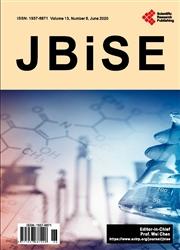High Concentration of Spermine Induces the Dedifferentiation of Somatic Cells into Pluripotent Stem Cells
引用次数: 0
Abstract
Cancer tissues contain cancer stem cells (CSCs), which play important roles in cancer metastasis. However, the mechanisms through which cancer cells dedifferentiate into stem cells have not yet been elucidated. In this study, the effects of high concentrations of polyamines produced in cancer cells on dedifferentiation were examined. The results showed that when normal human fibroblasts were cultured with high concentrations of spermine, the obtained polyamine-induced cells expressed alkaline phosphatase and marker proteins of pluripotent stem cells, although apoptosis occurred in most cells. In contrast, another polyamine-induced stem (PIS) cell line (Spe-2 PIS cells), obtained by culture in medium containing Rock, p53, and Bax inhibitors plus spermine, did not show signs of apoptosis. These Spe-2 PIS cells expressed marker proteins of pluripotent stem cells and differentiated into cardiomyocytes, brown adipocytes, and nerve cells. These results suggest that a high concentration of spermine, which often induces apoptosis in normal cells, has the capacity to dedifferentiate somatic cells into pluripotent stem cells and may be associated with the dedifferentiation of cancer cells, which continuously produce high concentrations of spermine. Moreover, the procedure to obtain Spe-2 PIS cells, which is simple and efficient, may have potential applications in regenerative medicine.高浓度精胺诱导体细胞去分化为多能干细胞
肿瘤组织中含有肿瘤干细胞(Cancer stem cells, CSCs),在肿瘤转移过程中起着重要作用。然而,癌细胞退分化为干细胞的机制尚未阐明。在这项研究中,研究了高浓度多胺对癌细胞去分化的影响。结果表明,高浓度精胺诱导的正常人成纤维细胞表达碱性磷酸酶和多能干细胞标记蛋白,但多数细胞发生凋亡。相比之下,在含有Rock、p53和Bax抑制剂加精胺的培养基中培养的另一种多胺诱导的PIS细胞系(Spe-2 PIS细胞)没有显示出凋亡的迹象。这些Spe-2 PIS细胞表达多能干细胞标记蛋白,并分化为心肌细胞、棕色脂肪细胞和神经细胞。这些结果表明,高浓度的精胺可以诱导正常细胞凋亡,使体细胞去分化为多能干细胞,并可能与癌细胞的去分化有关,而癌细胞会持续产生高浓度的精胺。此外,获得Spe-2 PIS细胞的过程简单而高效,在再生医学中可能具有潜在的应用前景。
本文章由计算机程序翻译,如有差异,请以英文原文为准。
求助全文
约1分钟内获得全文
求助全文

 求助内容:
求助内容: 应助结果提醒方式:
应助结果提醒方式:


